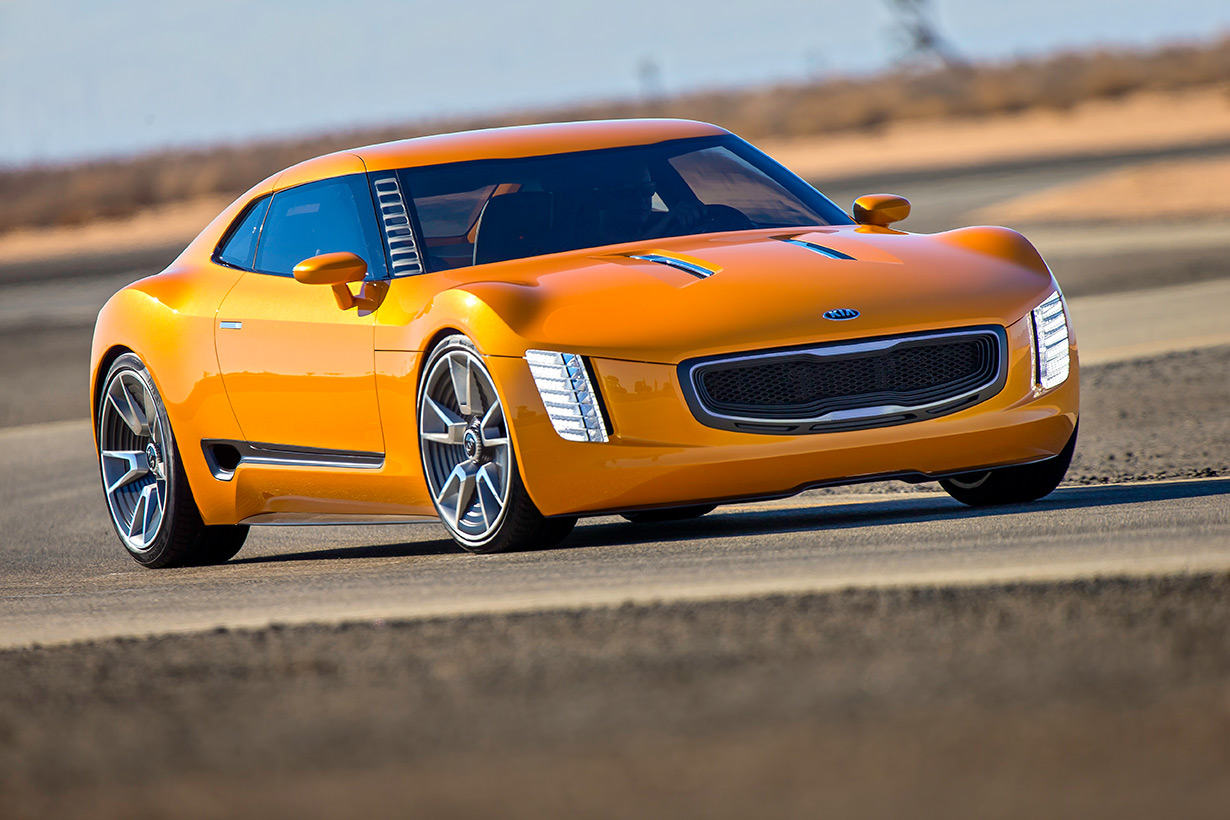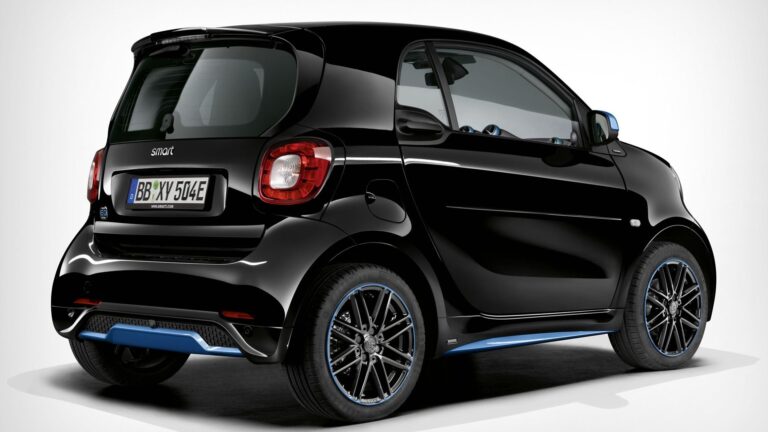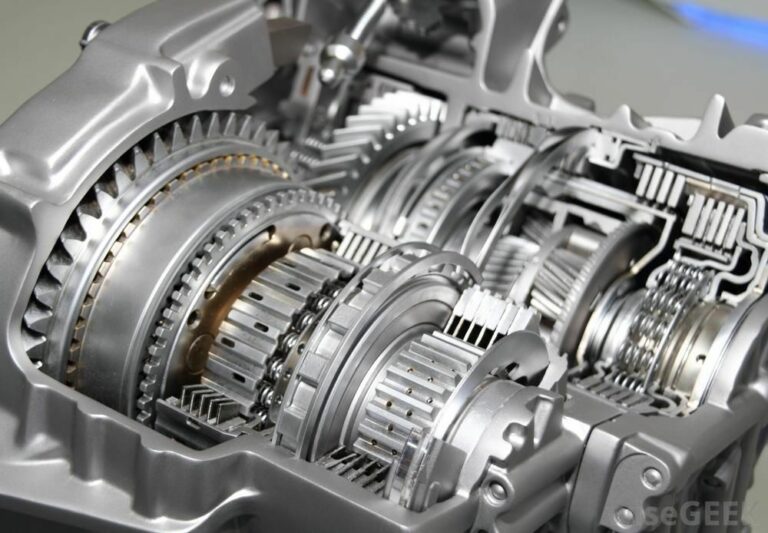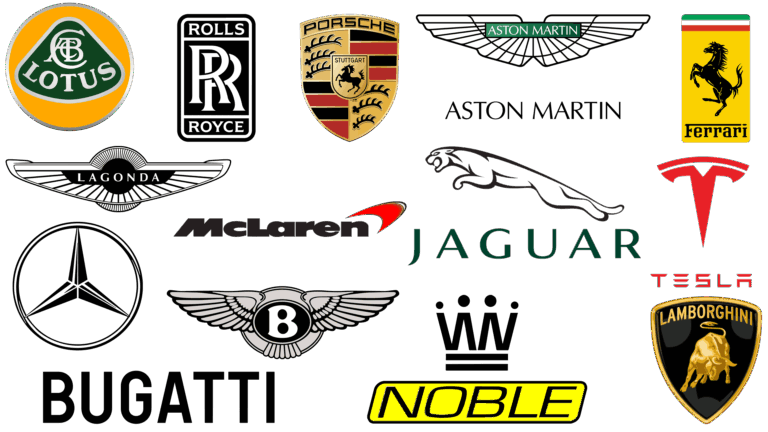What Brand Of Car Is A Stinger: Unveiling the Unexpected Performance Icon
What Brand Of Car Is A Stinger: Unveiling the Unexpected Performance Icon cars.truckstrend.com
In the vast and ever-evolving landscape of automotive brands, certain models emerge that defy expectations, challenge perceptions, and carve out a unique niche for themselves. The Kia Stinger is undoubtedly one such vehicle. For many, the very notion of a high-performance, rear-wheel-drive (RWD) sports sedan or grand tourer bearing the Kia badge was, at first, a surprise. Yet, the Stinger arrived, made its mark, and left an indelible impression on the automotive world.
So, to answer the fundamental question directly: The Stinger is a car manufactured by Kia.
What Brand Of Car Is A Stinger: Unveiling the Unexpected Performance Icon
This might still raise eyebrows for those who primarily associate Kia with economical compact cars, family-friendly SUVs, or practical sedans. However, the Kia Stinger was a bold declaration, a testament to the brand’s ambition, engineering prowess, and design capabilities. It wasn’t just another car; it was a statement of intent, signaling Kia’s serious entry into a segment traditionally dominated by established European luxury and performance marques. This article will delve deep into the Kia Stinger, exploring its origins, performance, design, market impact, and ultimate legacy.
Unveiling the Stinger’s Identity – It’s a Kia!
The revelation that the Stinger is a Kia often prompts a double-take. For decades, Kia Motors, a South Korean multinational automotive manufacturer, was primarily known for its value-for-money offerings. From its humble beginnings in 1944 (as Kyungsung Precision Industry, manufacturing bicycle parts) to its significant growth in the late 20th and early 21st centuries, Kia built its reputation on reliability, affordability, and practical design.
However, around the turn of the millennium, Kia embarked on a transformative journey. A significant turning point was the recruitment of Peter Schreyer, formerly Audi’s head of design, in 2006. Schreyer’s influence brought a distinct European flair and sophistication to Kia’s design language, exemplified by the "Tiger Nose" grille that became a signature element. This design revolution laid the groundwork for more ambitious projects.
The Stinger was the culmination of Kia’s desire to transcend its mass-market image and compete in a more premium, performance-oriented segment. It wasn’t about simply adding horsepower to an existing platform; it was about designing a car from the ground up that could genuinely excite enthusiasts while offering the practicality and refinement expected of a grand tourer. The brand understood that to be taken seriously in this new arena, they needed a vehicle that could stand toe-to-toe with the likes of BMW, Audi, and Mercedes-Benz, not just in terms of speed, but also in driving dynamics, interior quality, and overall sophistication. The Stinger was Kia’s audacious answer to that challenge.
The Genesis of a Game-Changer – Development and Design
The journey of the Kia Stinger from concept to production was a meticulous process driven by a clear vision: to create a true gran turismo. The inspiration for the Stinger can be traced back to the Kia GT Concept car, first unveiled at the 2011 Frankfurt Motor Show. This concept hinted at a rear-wheel-drive, four-door sports sedan, something entirely new for the brand.
The development team was led by two automotive industry titans:

- Peter Schreyer (Chief Design Officer): Schreyer’s vision shaped the Stinger’s sleek, fastback profile. He aimed for a design that exuded power and elegance, with long hood, short front overhang, and a sloping roofline that seamlessly integrated into the rear. The Stinger’s design is both aggressive and refined, with functional air vents, LED lighting, and an athletic stance that speaks to its performance credentials.
- Albert Biermann (Head of Vehicle Test & High Performance Development, later Head of R&D for Hyundai Motor Group): Biermann, a former head of engineering for BMW’s M performance division, was instrumental in tuning the Stinger’s driving dynamics. His expertise ensured that the Stinger wasn’t just fast in a straight line but also offered engaging handling, precise steering, and a balanced ride quality. The Stinger’s development involved extensive testing at the demanding Nürburgring Nordschleife, a testament to Kia’s commitment to performance.
The Stinger was built on a new rear-wheel-drive platform, shared to some extent with its luxury cousin, the Genesis G70. This dedicated platform allowed for optimal weight distribution and a lower center of gravity, crucial elements for a performance-oriented vehicle. The collaboration between design and engineering ensured that the Stinger was a cohesive package, where form truly followed function.
![]()
Performance and Powertrains – What Makes it Sting?
At the heart of the Kia Stinger’s appeal were its robust powertrains, designed to deliver exhilarating performance. Over its production run, the Stinger offered a few engine choices, though the focus was always on the more potent options.
-
2.0-liter Turbocharged Theta II Four-Cylinder Engine:
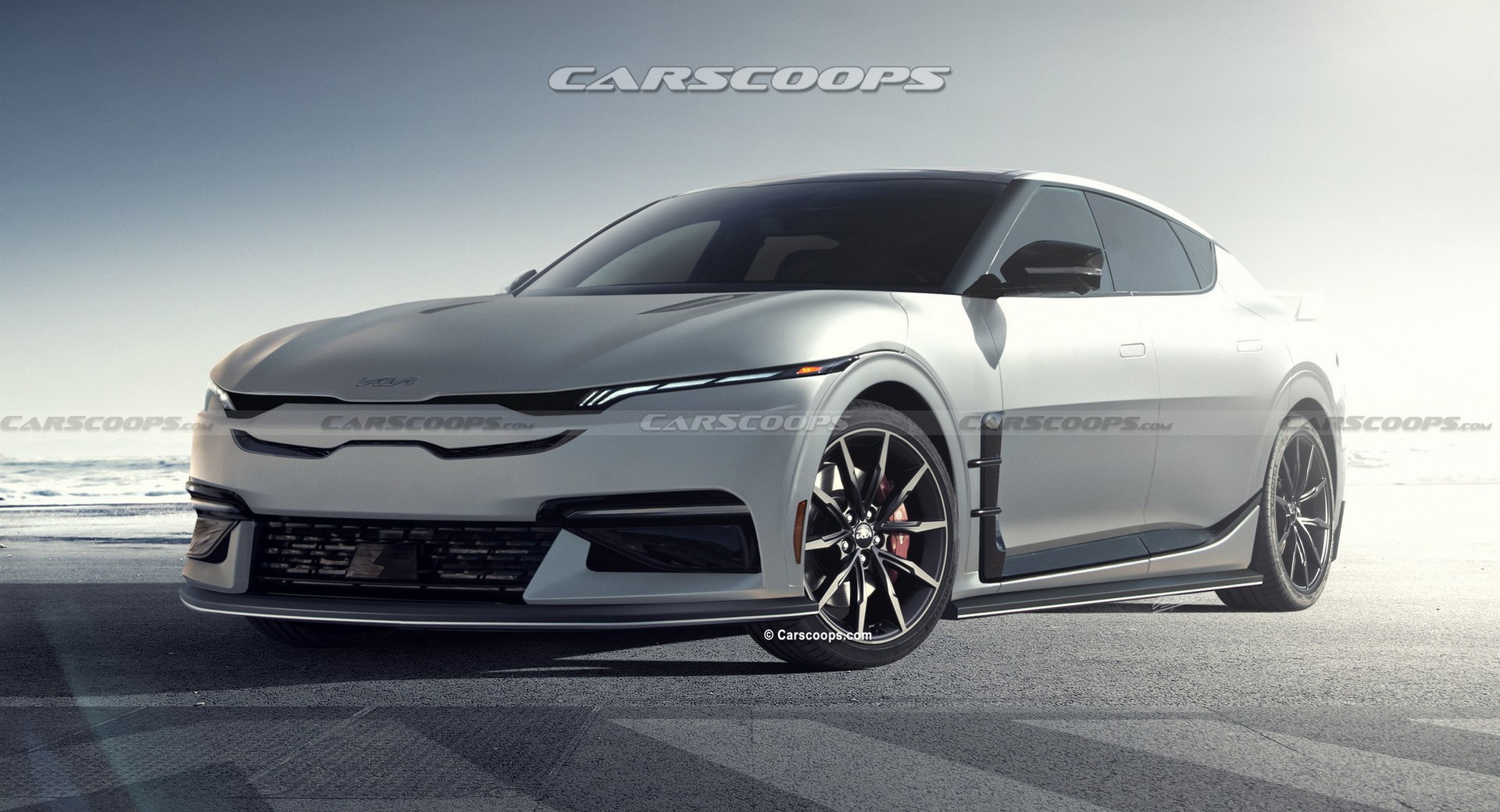
- Power: Approximately 255 horsepower and 260 lb-ft of torque.
- Characteristics: This engine provided a respectable balance of performance and fuel efficiency, serving as the entry-level option (often in the GT-Line trim). It was more than adequate for daily driving and offered a surprisingly engaging experience for a base model.
-
3.3-liter Twin-Turbocharged Lambda II V6 Engine:
- Power: Approximately 365 horsepower (later slightly increased to 368 hp for some markets/model years) and 376 lb-ft of torque.
- Characteristics: This was the Stinger’s crown jewel and the engine that truly defined its performance credentials. Paired with a smooth and responsive in-house-developed 8-speed automatic transmission, the V6 Stinger GT models could accelerate from 0 to 60 mph in a blistering 4.7 seconds (for RWD models), placing it firmly in the territory of premium sports sedans. The V6 offered strong, linear acceleration, a satisfying exhaust note, and ample passing power.
Drivetrain Options:
- Rear-Wheel Drive (RWD): Standard on all models, providing a classic sports sedan feel with excellent balance and handling characteristics.
- All-Wheel Drive (AWD): Optional, offering enhanced traction and stability, especially in inclement weather. The AWD system in the Stinger was rear-biased, maintaining a sporty feel while providing added grip. Higher-trim AWD models often featured dynamic torque vectoring for improved cornering.
Chassis and Braking:
- The Stinger featured a sophisticated suspension setup with MacPherson struts at the front and a multi-link arrangement at the rear. Higher trims (especially the V6 GT models) benefited from electronically controlled adaptive dampers (Dynamic Stability Damping Control), allowing drivers to switch between comfortable touring and firm, sporty handling.
- Braking power was equally impressive, with Brembo high-performance brakes (ventilated discs with four-piston front calipers and two-piston rear calipers) being standard on the V6 GT models, ensuring confident stopping power.
The combination of powerful engines, a refined transmission, advanced drivetrain options, and a meticulously tuned chassis made the Stinger a genuinely engaging car to drive. It struck an admirable balance between comfortable grand touring and spirited performance, capable of devouring highway miles with ease or tackling twisty roads with surprising agility.
Interior, Technology, and Practicality – Beyond the Speed
While performance was a core tenet, Kia didn’t neglect the interior, technology, or practicality aspects of the Stinger. The cabin was designed to be a comfortable and driver-focused environment, reflecting its gran turismo aspirations.
Interior Design and Materials:
- The Stinger’s interior boasted a premium aesthetic, featuring soft-touch materials, genuine leather upholstery (on higher trims), metallic accents, and available open-pore wood or carbon fiber trim.
- The design incorporated clear, analog gauges alongside a digital driver information display, striking a balance between classic and modern.
- The horizontal layout of the dashboard and the circular air vents, inspired by aircraft turbines, contributed to a sophisticated feel.
Comfort and Ergonomics:
- Front seats were supportive and comfortable, designed for long-distance journeys, with available heating and ventilation.
- The driving position was excellent, with good adjustability for the steering wheel and seats.
- While a "four-door coupe" or fastback, the rear seats offered decent legroom for adults, though headroom could be a bit tight for taller passengers due to the sloping roofline.
Technology and Infotainment:
- The Stinger was well-equipped with Kia’s intuitive UVO infotainment system, featuring a touchscreen display (ranging from 7-inch to 10.25-inch depending on the model year and trim).
- Standard features included Apple CarPlay and Android Auto integration, Bluetooth connectivity, and multiple USB ports.
- Higher trims offered premium features like a Harman Kardon 15-speaker premium audio system, a head-up display, and a surround-view monitor.
Safety and Driver-Assistance Systems (ADAS):
- Kia equipped the Stinger with a comprehensive suite of ADAS features, enhancing both safety and convenience. These included:
- Forward Collision-Avoidance Assist (FCA) with pedestrian detection
- Lane Keeping Assist (LKA)
- Blind-Spot Collision Warning (BCW)
- Rear Cross-Traffic Collision Warning (RCCW)
- Smart Cruise Control with Stop & Go
- Driver Attention Warning (DAW)
Practicality:
- The fastback design was not just for aesthetics; it provided a large and easily accessible cargo area thanks to the liftgate. The trunk space was competitive for its class, and with the rear seats folded down, it offered considerable versatility for luggage or bulkier items.
Overall, the Stinger’s interior experience complemented its performance capabilities, offering a comfortable, technologically advanced, and reasonably practical cabin that underscored its credentials as a true grand tourer.
Market Position and Legacy – A Brave Endeavor
The Kia Stinger entered a highly competitive and image-conscious market segment. Its primary rivals were established luxury sports sedans and fastbacks, including:
- BMW 4 Series Gran Coupe / 3 Series
- Audi A5 Sportback / A4
- Mercedes-Benz C-Class
- Genesis G70 (its platform mate)
- Infiniti Q50
- Acura TLX
The Stinger’s value proposition was compelling: it offered similar performance, superior styling (arguably), and a comparable level of luxury and technology to its European counterparts, often at a significantly lower price point. It appealed to buyers who appreciated driving dynamics and design but weren’t necessarily tied to a specific luxury badge.
Despite critical acclaim and a passionate following, the Stinger faced an uphill battle in terms of sales volume. Several factors contributed to this:
- Brand Perception: Overcoming decades of Kia’s "value brand" image proved challenging for some luxury-minded buyers.
- SUV Boom: The global automotive market was rapidly shifting towards SUVs and crossovers, diminishing the demand for sedans and even performance fastbacks.
- Internal Competition: The emergence of Kia’s luxury sub-brand, Genesis, with the G70 (which shared the Stinger’s platform and V6 engine), also created some internal competition.
- Electrification Focus: As the automotive industry pivoted towards electric vehicles (EVs), Kia began to prioritize its EV development, with models like the EV6 (especially the high-performance EV6 GT) becoming the new flagbearers for Kia’s performance aspirations.
Consequently, Kia announced the discontinuation of the Stinger in most major markets, with the final production ending in 2023. While its sales figures might not have shattered records, the Stinger’s impact on Kia’s brand image was undeniable. It proved that Kia could design, engineer, and produce a truly compelling performance vehicle that could stand alongside the best in the world. It elevated Kia’s standing, opened doors to new customer demographics, and paved the way for future performance-oriented models, particularly in the electric vehicle space. The Stinger is now regarded by many as a modern classic, a testament to Kia’s daring spirit.
Important Considerations for Potential Owners
With the Kia Stinger now discontinued, anyone looking to own one will be exploring the used car market. Here are some important considerations:
- Maintenance: Generally, the Stinger is considered reliable. However, as a performance vehicle, routine maintenance for things like tires (especially on V6 models with staggered setups) and brakes (Brembos can be costly to replace) might be higher than for a standard sedan.
- Fuel Economy: The 3.3L twin-turbo V6 engine, while powerful, is not particularly fuel-efficient, especially when driven enthusiastically. Expect mid-20s MPG on the highway and low 20s or even high teens in city driving.
- Resale Value: While initial depreciation was steeper than some luxury rivals, the Stinger’s cult status and discontinuation might help stabilize its value in the long term, potentially making it a future collectible. However, don’t expect it to hold value like a Porsche.
- Availability: As a discontinued model, finding specific trims or colors might require some searching. Parts availability should not be an issue for the foreseeable future, given Kia’s global presence.
- Driving Experience: Ensure you test drive both the 2.0L and 3.3L engines to determine which suits your driving style. The V6 truly unlocks the Stinger’s full potential.
- Pre-Purchase Inspection: As with any used performance car, a thorough pre-purchase inspection by a trusted mechanic is highly recommended.
Price Table: Kia Stinger (Original MSRP & Estimated Used Market Values)
Given that the Kia Stinger is now discontinued, new car pricing is no longer applicable. The table below reflects the original MSRP ranges for various trims and model years, alongside estimated current used market values. These used values can vary significantly based on mileage, condition, trim level, optional features, location, and market demand.
| Model Year | Trim Level (Engine) | Original MSRP Range (USD) | Estimated Used Price Range (USD – as of late 2023/early 2024) | Key Features / Notes |
|---|---|---|---|---|
| 2018 | 2.0L Base (2.0T I4) | $31,900 – $32,700 | $18,000 – $25,000 | Entry-level, RWD or AWD, good value. |
| Premium (2.0T I4) | $37,100 – $38,900 | $20,000 – $28,000 | Added tech, larger screen, Harman Kardon audio. | |
| GT (3.3L Twin-Turbo V6) | $38,300 – $40,100 | $22,000 – $30,000 | Performance focus, Brembo brakes, adaptive suspension. | |
| GT1 (3.3L Twin-Turbo V6) | $43,300 – $45,100 | $25,000 – $33,000 | Enhanced tech, heated/ventilated seats, sunroof. | |
| GT2 (3.3L Twin-Turbo V6) | $49,200 – $51,000 | $28,000 – $38,000 | Full suite of features, Nappa leather, ADAS. | |
| 2020 | GT-Line (2.0T I4) | $33,090 – $34,990 | $22,000 – $30,000 | Sportier styling for I4, some GT features. |
| GT (3.3L Twin-Turbo V6) | $39,590 – $41,490 | $25,000 – $35,000 | Core V6 performance. | |
| GT1 (3.3L Twin-Turbo V6) | $45,490 – $47,390 | $28,000 – $38,000 | Mid-range V6, balanced features. | |
| GT2 (3.3L Twin-Turbo V6) | $50,590 – $52,490 | $32,000 – $42,000 | Top-tier V6, all available options. | |
| 2023 | GT-Line (2.5L Turbo I4) | $36,690 – $38,890 | $28,000 – $38,000 | Updated engine (300hp), refreshed styling, larger screen. |
| GT2 (3.3L Twin-Turbo V6) | $51,890 – $54,090 | $38,000 – $48,000 | Final model year, highest spec, full features. |
Note: Prices are estimates and subject to change based on market dynamics, vehicle condition, mileage, and region.
Frequently Asked Questions (FAQ) about the Kia Stinger
Q1: Is the Kia Stinger still in production?
A1: No, the Kia Stinger has been discontinued in most major markets. Production for the final model year concluded in 2023.
Q2: Is the Kia Stinger a luxury car?
A2: While Kia is not traditionally a luxury brand, the Stinger was designed and engineered to compete with premium and near-luxury sports sedans. Its interior quality, advanced features, and driving dynamics certainly put it in a luxury-adjacent category, offering luxury-car features without the luxury-brand price tag.
Q3: What replaced the Kia Stinger?
A3: There isn’t a direct gasoline-powered replacement for the Kia Stinger. However, Kia’s focus has shifted towards electrification. The high-performance Kia EV6 GT, an all-electric crossover, is considered the spiritual successor, carrying forward Kia’s commitment to thrilling driving dynamics.
Q4: Is the Kia Stinger reliable?
A4: Generally, the Kia Stinger has a good reputation for reliability. It uses well-tested engines and platforms. As with any performance car, regular maintenance is crucial, and some owners might experience minor issues, but no widespread major reliability concerns have been reported.
Q5: Is the Kia Stinger fast?
A5: Yes, especially the 3.3L twin-turbo V6 models. With 0-60 mph times in the mid-4 second range, the Stinger GT is genuinely fast and capable of holding its own against many established sports sedans.
Q6: Does the Kia Stinger have good handling?
A6: Absolutely. Thanks to its dedicated rear-wheel-drive platform, precise steering, and available adaptive suspension (especially on V6 models tuned by Albert Biermann), the Stinger offers excellent handling, a balanced chassis, and an engaging driving experience.
Q7: Is a used Kia Stinger a good buy?
A7: For enthusiasts looking for a performance-oriented, stylish, and relatively unique car at a competitive price, a used Kia Stinger can be an excellent buy. It offers a lot of car for the money. However, be mindful of higher running costs (fuel, tires, brakes) compared to a standard sedan, and ensure a thorough pre-purchase inspection.
Conclusion
The Kia Stinger stands as a remarkable chapter in Kia’s automotive journey. It answered the question "What brand of car is a Stinger?" with a resounding and surprising "Kia!" – a declaration that forever altered perceptions of the brand. Far from being just another car, the Stinger was a bold, beautifully designed, and genuinely engaging performance fastback that dared to challenge the automotive establishment.
Though no longer in production, its legacy endures. The Stinger proved that Kia was capable of building a world-class performance vehicle, pushing the boundaries of its brand image and paving the way for future ambitious projects, particularly in the electric realm. For those seeking a unique blend of style, speed, and practicality without the traditional luxury price tag, the Kia Stinger remains an exceptional choice on the used market – a true driver’s car that continues to sting with its surprising prowess.
